Review: 2011 Hyundai Sonata SE

Chatting with frequent flyers provides a unique context to mainstream vehicles, especially with recent changes at the rental car counter. That’s because the 2011 Hyundai Sonata arrived and she’s all that with a bucket of awesome. Renting one is like an extra $50 Per Diem, or a “suite” upgrade at the Hilton. After spotting a Sonata SE on the showroom floor, I’m wondering if the same applies for retail buyers with a need for road holding and toddler hauling. Because the Sonata is certainly a nice car.
Something’s afoot when Hyundai brochure photography mimics the minimal, high contrast punch of a luxury brand. The Sonata isn’t the second coming of the Chrysler LH cars, as the cab forward A-pillar needs a hunk of black plastic to give an essence of sleekness, without actually doing so. But a gen-u-wine window, not a plastic plug, accents the Sonata’s C-pillar slant. Add the chrome-accented beltline running from the fenders
to the C-pillar for more proof of Hyundai’s lack of beancounting. Like the outgoing Mercedes CLS, the Sonata is downright gorgeous from some angles, plump and tall from others.
But aside from the pulled back headlights (that look like my dog’s eyes when pushing her forehead rearward) and the grille’s XXL orthodontics, there isn’t an offensive or derivative line on this body. I could elaborate, but will close with the Sonata SE’s smoke-toned, 18-inch rims and punchy dual exhausts (worth an extra 2hp, dontchaknow) for maximum visual punch.
For the $23,800 as-tested price, there’s much to appreciate inside: richly grained wheel with multiple elements working in striking harmony, a Lexus-worthy center stack and clean (but functional) multi-screened gauges. Combine the dash with door panels that look too good for its class, and I wonder if Hyundai is engaging in price dumping: the Sonata is just that frickin’ classy.
More proof: upscale chrome accents surround the driver like a Cadillac CTS. Options like sat-nav, moonroof and high-wattage audio are worthy upgrades, since the stock audio system has all the gadgets (Bluetooth, USB, XM, 6-speakers) but needs more defined imaging and a subwoofer for maximum bump. Aside from the need for piano black trim (a la Sonata Limited) the SE’s guts are damn near impossible to fault.
It’s all in a package that provides reasonable trunk space (with easy to close, bean counter approved, dog-leg hinges) comfortable seating for five and unique leather and cloth seating for the Sonata SE. The latter is a wonderful throwback to 1980’s euro pocket rockets, though lateral support isn’t up to yesteryear’s specifications. Yet the grippy yet supple coverings symbolize the SE’s need to provide luxury where you need it, performance where it matters. While the turbo model has yet to hit the showroom, there’s one convenient truth to the 200hp, direct-injected, twin-cammed, four-cylinder motor: it has entry-level sedan economy with most of the performance desired from a top-drawer V6 upgrade.
Mash the throttle on the Sonata SE and there’s no torque steer, but plenty of torque for sane drivers. Midrange thrust is distinctly V6-like, without the price or economy (35MPG) penalty associated with a larger motor. The SE’s flappy paddle shifters are like grade school relationships: she won’t let you kiss (the rev limiter) but she’ll make you squirm (in top gear with no revs) until you downshift on your own.
And holding gears to one’s satisfaction is very much appreciated, considering the SE’s steering and suspension upgrades. Much like the SE-fettled Camry, the Sonata has reasonable feel with nicely weighted boost, flat cornering to mild understeer at the limit. It’s a fun sedan that “feels” better after finishing said hoonery, looking at the nearasdammit luxury car surroundings and pondering the asking price on the sticker.
Then again, the Sonata isn’t the second coming of the Model T: it has competition. And the SE’s NVH controls are distinctly lacking on highway trips, as tire howl from the 18” wheels merited extra stereo gain to silence the rumble. And I still “felt” the howl. Add the slightly choppy ride of this sporting sedan and perhaps either of the other Sonata models is a
wiser choice for most Americans. Plus, the Sonata Limited’s upscale options (rear heated seats, side mirrors with turn signal duplicators) make for a convincing case in upselling.
Plus, Hyundai’s loony 10-year warranty: which kept me thinking that, aside from these tires, the Sonata SE is a cheap and cheerful high-performance import sedan from yesteryear, with more modern luxuries than any (non-Phaeton) VW. Somehow, the Hyundai Sonata raised the bar for this class. And to every new family sedan waiting in the wings: match this car’s interior content, direct injected performance and upscale options, or go home.
Readers who follow TTAC on Facebook had the opportunity to ask questions about the Sonata SE. If you would like to ask questions of reviews in progress, check out our Facebook page. Fans, here are your answers.
T. Redfern, S. Chandrashekar: after sampling the Camry/Sonata SE, the only thing going for Toyota is the quieter tires, I suspect the non-sport Sonatas will clean house. R. Lauder: stacking up to the Accord, Camry, Fusion and Malibu is tough to say without a comparo test, but it smells like a home run. D. Thuma: it’s a stylish car with *stunning* attention to detail and respectable performance. R. Aucoin: No clue if a steering shaft recall was performed, but the steering gear didn’t pole-vault me down the highway. M. Singer: Yes, but I think the “eco” light goes away when you have the fuel economy gauge activated.

More by Sajeev Mehta
Latest Car Reviews
Read moreLatest Product Reviews
Read moreRecent Comments
- Fred I would get the Acura RDX, to replace my Honda HR-V. Both it and the CRV seats are uncomfortable on longer trips.
- RHD Now that the negative Nellies have chimed in...A reasonably priced electric car would be a huge hit. There has to be an easy way to plug it in at home, in addition to the obvious relatively trickle charge via an extension cord. Price it under 30K, preferably under 25K, with a 200 mile range and you have a hit on your hands. This would be perfect for a teenager going to high school or a medium-range commuter. Imagine something like a Kia Soul, Ford Ranger, Honda CR-V, Chevy Malibu or even a Civic that costs a small fraction to fuel up compared to gasoline. Imagine not having to pay your wife's Chevron card bill every month (then try to get her off of Starbuck's and mani-pedi habits). One car is not the solution to every case imaginable. But would it be a market success? Abso-friggin-lutely. And TTAC missed today's announcement of the new Mini Aceman, which, unfortunately, will be sold only in China. It's an EV, so it's relevant to this particular article/question.
- Ajla It would. Although if future EVs prove relatively indifferent to prior owner habits that makes me more likely to go used.
- 28-Cars-Later One of the biggest reasons not to purchase an EV that I hear is...that they just all around suck for almost every use case imaginable.
- Theflyersfan A cheaper EV is likely to have a smaller battery (think Mazda MX-30 and Mitsubishi iMEV), so that makes it less useful for some buyers. Personally, my charging can only take place at work or at a four-charger station at the end of my street in a public lot, so that's a crapshoot. If a cheaper EV was able to capture what it seems like a lot of buyers want - sub-40K, 300+ mile range, up to 80% charging in 20-30 minutes (tops) - then they can possibly be added to some lists. But then the issues of depreciation and resale value come into play if someone wants to keep the car for a while. But since this question is asking person by person, if I had room for a second car to be garaged (off of the street), I would consider an EV for a second car and keep my current one as a weekend toy. But I can't do a 50K+ EV as a primary car with my uncertain charging infrastructure by me, road trips, and as a second car, the higher insurance rates and county taxes. Not yet at least. A plug in hybrid however is perfect.




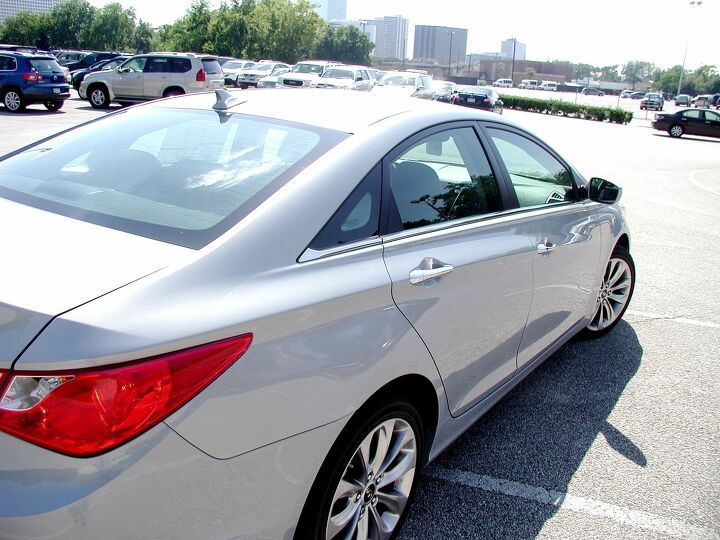


















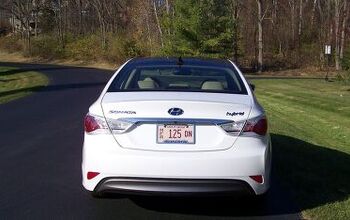
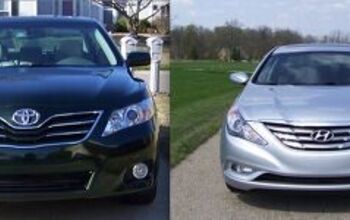

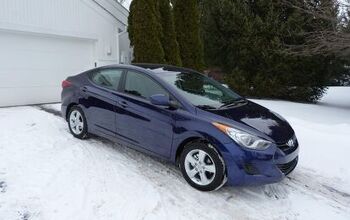
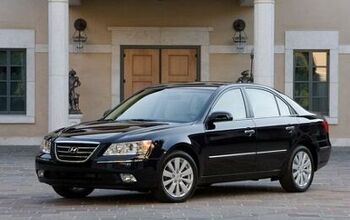









Comments
Join the conversation
The new 2011 4 cylinder engine has a timing chain, instead of a timing belt. This will increase the reliability and cut the maintenance cost significantly. Instead of replacing the belt at 60K miles at a cost of $600+ at your dealer, the chain gets inspected at 100K miles and replaced at 200K. Now that is a major plus over most of Hyundai's competitors.
I just saw this car for the first time today. It was in a flat blue color. My opinion was "man that is ugly" from the pics....but after seeing it in metal and paint...it is far uglier than first thought, I'm talking Pacer ugly.